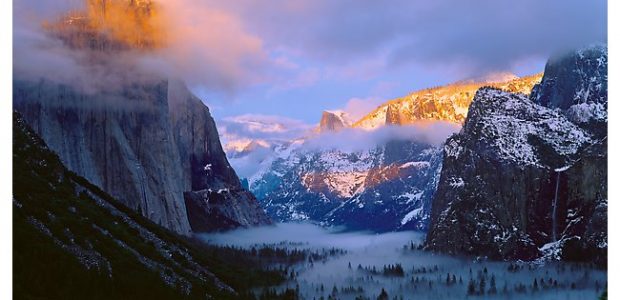By Michael Reichmann and Nick Devlin
Gura Gear
Back in 2008 I reviewed the original Kiboko bag from Gura Gear. It instantly became my favourite bag for when doing travel shoots, and has remained so for the past few years. The reason is that it is extremely light-weight and carries a huge amount of equipment for its size.
Part of the reason for Gura Gear’s success with the Kiboko is that it was designed by a photographer, not just someone in the bag business. And Andy Bigg’s concept of what he wanted a camera bag to be isn’t founded on theory. It’s based on the fact that Andy leads photographic workshops in Africa, Antarctica, and elsewhere around the world. He flies internationally on shoots as often a once a month and has been doing so for years. His bag designs are therefore based on literally hundreds of thousands of air miles, and countless days on the trail, on foot, Land Rovers, and every other means of transportation you can imagine.
Gura Gear doesn’t design its bags to a price. They design them to be the best built, lightest weight and most versatile that they can be. The price they charge therefore isn’t the lowest, but the quality is extremely high, and every bag has a 5 year warranty against defects.
The Bags
In addition to the originalKiboko 30L, which Irevieweda few years ago, Gura Gear has now introduced two new bags, theChobe 19-24Land theKiboko 22L+. I’ll be reviewing theChobewhile Nick has been using the new smallerKiboko.
Chobe
By Michael Reichmann
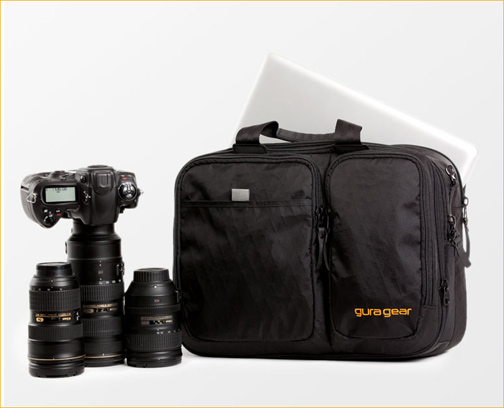
The Chobe is a bag that I wish I’d had thirty years ago. It would have made the daily commute to work as well as international travel and photo shoots that much more pleasurable and efficient. How can it do all three?
The secret is that it comes with a large multi-pocket padded insert capable of carrying a huge number of lenses and bodies in a highly configurable layout. In addition to the huge center pocket with insert for photo gear there’s a side pocket for a 15″ laptop and other large side pockets to hold a tablet such as an iPad, as well as cell phone, key’s, accessories, books, passports and other documentation. The bag itself weights a mere 2 lbs. The price, directly fromGuraGearis $349, which includes free delivery in the USA.

Once in your hotel room, or home, the large center section can be further collapsed by zipping in together, turning the bag into more of a shoulder attache, perfect for walking into a business meeting with notes and other paraphernalia.
If you need to head out on a short tip that isn’t photo-oriented, the lens and body insert can be removed as a single piece, and enough clothes and personal items for a few day’s travel can be inserted instead.
In addition to the outside zipper pocket for a 15″ laptop, and other small zippered pockets for various business, photographic and personal items, there is a fold-out pouch for a water bottle and secure points for attaching things like key chains. Frankly, it appears that Andy and his colleagues have thought of just about everything.
Add to this GuraGear’s no-nonsense free home trial and an unconditional warranty against manufacturing or material defects, and you have a compelling and highly versatile bag.
I’ve been mulling over trying to find something about the bag to criticise so that this doesn’t sound like a total suck-up to my friend Andy, but I can’t find one – yet. I’m planning on making this my primary travel / shooting bag from now on, so check back with me in a few years and I’ll let you know how it’s going.
Which bag did I use to bring my Sony NEX-7 and Leica lenses to Mexico? My Chobe bag, of course.
Kiboko 22L+
By Nick Devlin
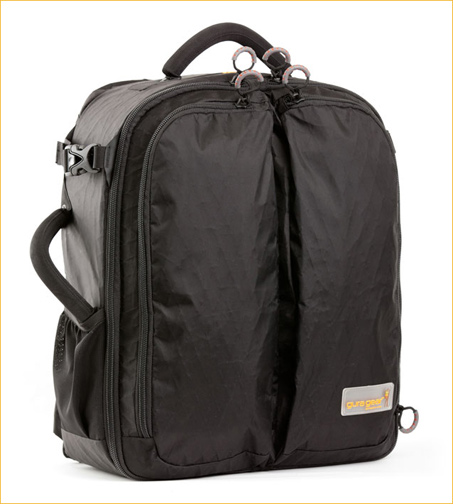
Introduction
Camera bags are part necessary evil and part obsession. If you’re like me, over the years, our closets and basement storage areas begin to overflow with past grasps at the Holy Grail – a bag that is comfortable to carry and fits everything we need, without feeling like it has everything we own in it. And, just as there is an endless number of photographers yearning for a better bag, an ever growing number of companies are offering their own take on the solution to the intractable laws of physics; laws which cruelly dictate that carrying heavy things is, and always will be, heavy and uncomfortable.
Of late, the camera bag market has become both crowded and intensely competitive. Bags are better made, more functional and less expensive than they have ever been. For nature and outdoor shooters, who by definition need to carry a good deal of gear to their subjects, this abundance of choice is a blessing.
The upstart boutique bag maker Gura Gear entered this extremely competitive field in 2008 with their signature Kiboko backpack, now known as the Kiboko 30L. The brainchild of wildlife photographer Andy Biggs (and his equally bag-loving design team), the Kiboko 30L is a light-weight yet gargantuan bag, capable of carrying a baby hippo to safety, all in a standard carry-on-compliant package. For shooters who routinely travel with a retinue of super-telephoto lenses, or extensive flash kits, the 30L was just the ticket. Carrying that much gear is a dirty job, which the Kiboko did very well.
For me, however, the Kiboko 30L was simply bigger than I needed and, ironically, too good at its game. A full Kiboko 30L could be like, well, carrying a baby hippo to safety, albeit as comfortably as possible (see above re: merciless laws of physics). So I took a pass and continued using my beaten and world-weary bag from one of the mainstream manufacturers. In my case, the old standby was a Lowerpro Computrekker 200AW, a bag which has proven really reliable and able to fit almost whatever I threw at it. This Lowe bag hit what I consider the sweet-spot in terms of size, fitting the most restrictive international carry-on standard, yet able to swallow a 15” laptop and a full MF kit, or a really large 35mm kit, or some combination of both.
In late 2011, Gura Gear kicked it up a notch with two new bags, one Kiboko 22L+ targeted at exactly this mainstream backpack niche.
The Basics
The Kiboko 22L+ is a really nice, moderately sized backpack, conforming to the more stringent (or stingy) international carry-on standard. It is the size of backpack most photographers will want to carry. Like it’s bigger brother, the Kiboko 22L+ has its main compartment divided vertically down the middle into two, equal halves, each with separate zipper access. Both sides have matching outside compartments as well. The bag also features a well-hidden but ample laptop compartment on the back side, which can accommodate up to a 17” MB Pro (Gura Gear recommends 15” MBP just because of the weight, but the 22L+ will fit a 17” snuggly). The bag also comes with 3,652 internal dividers, neatly tied with strands of hair from a Japanese virgin. At least that’s what I think it said on the press release. Suffice to say that a lack of internal dividers is not a frequently fielded complaint on the Gura Gear support line. The reason for all these extras appears to be to allow horizontal division of the compartments if such a configuration better fits the photographer’s gear. While I am used to having a plethora of small, useless dividers come with my photo bags, this is the most usefully configurable batch I have yet seen.
The Big News
The touchstone of this bag is its build quality. First off, it is lighter than anything in its class. While that may not seem like a big deal, every pound counts on a long hike. Moreover, when flying the world’s crappier airlines, with their little devil-bitch counter-agents who have the audacity to weigh your carry-on baggage, every gram is precious. In this sense, the Gura bags remind me a lot of high-end bicycle components: they charge a premium for shaving off a few grams and providing the finest build quality. The salient difference is that, unlike with titanium bike parts, ordinary recreational users will definitely feel the difference of the 22L’s lightweight construction.
Speaking of build quality, the Kiboko is superb in every respect. This is the best made bag I have ever used. The materials are all first-rate, and the bag is replete with small touches that make its use more pleasurable. For instance, virtually every adjustment strap (and there are a LOT) has a Velcro tied-down sewn onto it to allow the excess strap length to be rolled and stored neatly and compactly. Beautiful!
The fabric, zippers and harness are also all top-notch. While the price of the Gura bag reflects the higher material costs, I have a feeling one of these bags costs way more to build than the mainstream products out there. If you are one of those people who appreciates real quality and attention to detail, this bag will give you little bits of joy over and over as you use it.
Capacity
In a word, the capacity of the 22L+ is “sufficient”. As in, ‘please God don’t ever let me take more gear than this on a trip with me.’ After filling the bag with close to twenty-five pounds of Pentax 645 gear, and then various combinations including my core 645D kit, my 4×5 Razzle camera, a Mamiya 6 kit, a Fuji X10 and a Leica M9 (all the same time), I decided that this was, indeed, all the backpack I would ever need. The back and the bank will give out long before the 22L+ ever does.
I think this holds true for virtually every application one could have for the bag. The 22L+ can hold a 500mm f4 lens in one side, and two D3s, a 70-200mm, a 24-70mm and a 16-35 on the other. You could probably even squeeze a couple of flashes in somewhere. If you need more gear than that, you need a manservant to carry it.
Usability
So why the Butterfly? As a die-hard single-compartment kind of guy, I confess to having found the butterfly design baffling when I first saw it, and irritating when I first used it. My pet peeve is that the flaps simply will not stay open when unzipped. Of course, as with everything about the Kiboko, this a conscious design choice, the genesis of which lies in Andy Biggs’ primary work as a safari photographer and expedition leader. Put simply, when shooting in the dusts of Africa, the last thing you want is for the flap of your backpack to stay open. The Kiboko is designed around a mandate of protecting your gear, and closing the garage door, so to speak, whenever the bag is on the ground goes a long way towards accomplishing that goal.
When asked, Andy explained that the butterfly design grew out of the need to have two bodies with lenses attached ready to go on Safari. In addition it limits the space needed to open the bag and also prevents a large flap from landing in snow, mud, elephant dung or whatever else happens to be on the ground.
The flipside of this is that a closed bag is kind of annoying when you’re reaching for a different lens. The butterfly is, in absolute terms, somewhat less convenient to use when shooting in the same position for a long time and changing lenses frequently.
After using the Kiboko 22L+ for over a month, I have made my peace with the butterfly design. Indeed, I have come to appreciate the discipline it imposed on me in terms of planning and packing the bag. Lenses and accessories used together go in a particular place. With one giant open pouch, I had become lazy and grown accustomed to dumping lenses wherever there was room. Working with the Kiboko, I found myself planning where gear was placed, picking a place for everything and then sticking with it. Ironically, while I did this to overcome what I perceived as an shortcoming, this process reverse-engineered an improvement in my fieldwork because lenses were always more identifiably at-hand. Who says you can’t teach an old bag-user new tricks?
For a studio shoot, or any situation where the flaps are best open, a strong office “A” clamp does the trick holding the ‘wings’ open. Still, if there was one design improvement I could suggest on the 22L+, a built-in way to lock the flaps open would be it.
At the end of the day, I remain ambivalent about the butterfly design. I have learned to live with it, and even like some aspects of it, but in my heart still prefer the single flap. Only time will tell if I continue to reach for the Kiboko more often than another backpack, but I suspect I will. I would love to see what Gura could do if they moved away from the butterfly-paradigm of the Kibokos and tried to make a bag whose principal design mandate was field-usability as opposed to gear cartage and protection. To be clear, I am not advocating an end to the signature Kikobko line, but now that Gura Gear has established themselves as a serious entrant into the photo bag market, a diversification of designs would be a welcome and likely profitable next step.
I have similarly mixed feelings about the fact that the zippers on the outside pockets only run to the bottom of the bag, but not across it, opening only on three sides. This, too, is a deliberate choice, made to prevent gear from falling out if the zipper is left open. Clever, but at the cost of a slight bit of convenience.
As with all things, the Kiboko giveth where it taketh away. The zippers all come with sewn pull-loops attached, rather than just bare metal. This makes accessing the bag faster as one is never left searching for the tab, and the opening and closing process is faster both ways. More than any other feature, the strength and ease of use of the zipper-pulls impressed me. My first return to a more pedestrian bag lacking this feature made me miss the Kiboko immediately.
Carrying
The Kiboko 22L+ is the most comfortable photo backpack I have ever used. The harness and padding all fall in the right places and are endlessly adjustable like the 426-way driver’s seat in a Mercedes roadster. Lightly laden I could probably forget I had it on. A fully load is, of course, not forgettable. The laws of physics still win and a heavy bag is still a pain to carry. But the Kiboko is less of a pain than any of the other packs I have at equivalent loads. When it comes to playing human mule, that is about as good as it gets.
My one beef with the bag in terms of capacity is that the 22L+ does not easily attach a tripod. One can place a smaller pod (or even a fairly large Gitzo) in the side pouch, but I found that this unbalanced the bag. Since the bag does not have to open in the centre, and effectively has a spine, perhaps a solution could be engineered around strapping the tripod down the middle of the bag.
Styling
The Gura bags are undeniable modernist. If Le Corbusier made camera bags, they would look like this: black, minimally styled, kind of boxy and built uncompromisingly to purpose. This function-dictates-form approach also helps Gura stand out in a market, which has increasingly embraced the garish and colourful as fashion statements. A number of other companies are playing to leverage more avant garde design, funkier colours, etc. Crumpler perhaps foremost amongst them. Gura doesn’t play that game. The bags all look good, but they make no bones about the fact that they are large, boxy camera bags. Initially, this inclined me against the bag. However, as time has passed, the shear quality of the bag has made me a convert. While I am still not a modernist, I appreciate that Gura’s minimalism is both a conscious design choice and a convincing one.
As an aside, I just don’t think that the African tribal monikers by which Gura has chosen to denominate its bags mate comfortably with their high-modernist styling. When I hear “Kiboko”, I think of something in bright orange and purple, or maybe leopard print. By comparison, Le Corbusier called his famous couches simply the LC2 and LC3. Just saying. None of this matters the least, of course, since the bag is a functional object. Still, as a matter of marketing, I don’t know if the names are helpful.
Protection
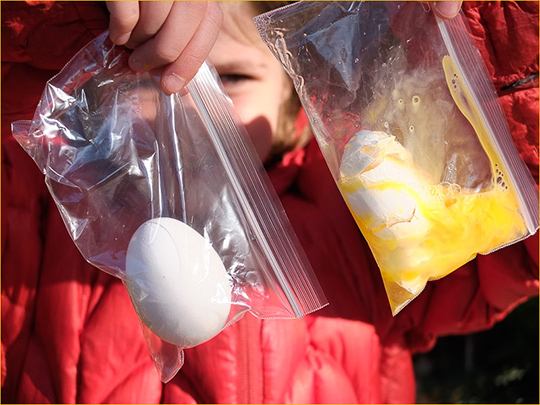
With a bag this light, the question that logically pops to mind is whether this slightness of build comes at a sacrifice in gear protection? My highly, highly unscientific suggest not. When one has an eleven year-old step-daughter who is a huge fan of the TV show Myth Busters, bag testing gets a whole lot more fun. Faced with the task of determining whether the Kiboko could protect camera gear in the case of a fall, without actually dropping my own camera gear, we did what any sensible person would do. We loaded the bag with a half dozen raw eggs and a brace of round, fist-sized rocks from the front garden, and threw it off places, like the roof.
The gleeful and demonic laughter only increased with the height of the test-drops, as we worked out way up from waist-height, to shoulder-height, the front porch, the second floor balcony and, eventually, the third floor balcony.
Now before you all write to me outraged, I know this is not a scientific test of anything. But as it turned out, it was an interesting experiment to a sense of what kind of protection the bag can offer. In short, the Kiboko is a great way to carry raw eggs if your day-to-day work involves falling off Victorian houses. With the exception of one particularly ungainly corner-impact on a recycling bin, the eggs survived entirely unscathed. Astonishingly, even when cast off the third floor balcony onto the cement alleyway below (a drop of almost 30’), not a single one of the remaining eggs broke. Such an impact would obviously not do good things to precision optical equipment, whether they cracked or not. But this was still kind of a fun test.
I hasten to add that there was no comparative aspect to this test. I have no idea how other bags would do under similarly silly circumstances, but guess most would perform equally well. However, what we can glean from this experiment (other than that if you want to test a camera bag you’re having omlettes for lunch) is that the Kiboko 22L+’s light-weight design does not come at the cost of obvious protection from shock-transmission. The moral of the story is that, despite being a featherweight itself, the Kiboko offers as good protection as can be hoped for in a camera backpack. I’m not saying it’s necessarily miraculous or better than its competitors, but I couldn’t ask for more.
In terms of more pedestrian hazards, like rain, the Kiboko looks and feels pretty water resistant as-is, but also comes with a build-in rain cover should the weather get really heavy.
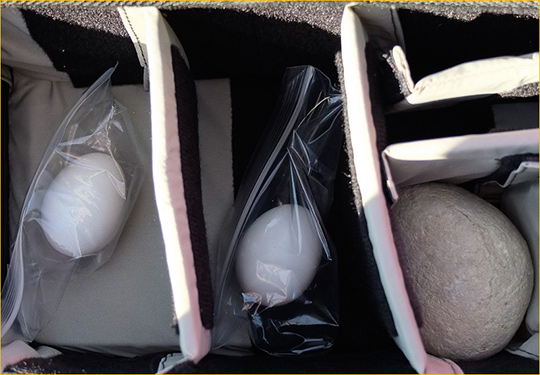
Price
I n a way, the price of one’s camera bag is darn near irrelevant. Nowadays, any camera bag you carry will be less expensive than any item you carry inside it. If you have enough gear to fill a photo backpack, you have the means to buy a good one.
Of course, being human, photographers like to save a penny (to save-up for their next multi-thousand dollar DSLR) and also feel that they are getting good value. To my eye, LowePro has become the Ford (or Honda, if you prefer) of the camera bag market. They have a huge line of products, covering almost every conceivable need and application, all of which are decently made and competitively priced. While I have owned bags from virtually every maker, the aforementioned Lowe Computrekker has remained my go-to bag for shooting trips of all varieties, and has been completely serviceable. If I had to replace it today with another Lower product, I’d have no hesitation to do so. You don’t need to spend $300+ on a backpack. You do, however, have to spend that to get a backpack this light with this level of build quality. To my mind, what you get from the Gura product is well worth it.
Conclusion
Gura Gear’s bags sells for a premium price, but offers premium build. In the grand scheme of things, it’s a rather modest premium being asked, considering how valuable what we carry in it and what we carry it on are.
All in all, the Kiboko 22L+ is quite a satisfying stop on the quest for the Holy Grail of camera-bag perfection, even if the search will never cease.
[disclaimer: The boys behind Gura Gear are goods friends of mine. I obviously want them to do well. That said, I chose not to buy the Kiboko 30L, because it didn’t suit my needs. I bought the Kiboko 22L+ with my own money, and have given them the same feedback in person as is contained in this review.]
January, 2012
You May Also Enjoy...
Treasured Lands, A Photographic Odyssey Through America’s National Parks
The 100th anniversary of the National Park Service has finally arrived. My contribution to the occasion is the photography book Treasured Lands: A Photographic Odyssey
